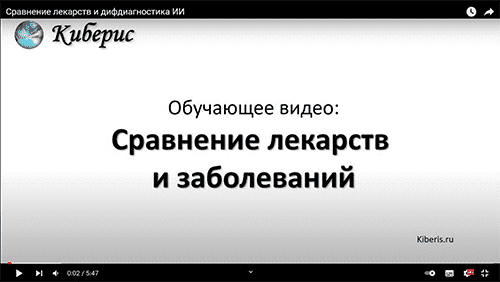Distinctive symptoms
Register , to see more distinctive signs of diseases and studies40% —
Register , to see more distinctive signs of diseases and studies— 100%
brain damage
39%
—
duck gait —
78%
consequences of stroke
36%
—
weakness in the leg muscles
11%
84%
fasciculations
34%
—
contracture —
72%
discirculatory encephalopathy
34%
—
myopathy —
71%
tics
33%
—
weakness in the hands —
70%
encephalopathy
32%
—
curvature of the spine —
68%
amyotrophic lateral sclerosis
31%
—
weakness in the legs
14%
82%
pseudobulbar syndrome
28%
—
progressive duchenne muscular dystrophy —
66%
lower paraparesis
28%
—
difficulty walking —
64%
upper paraparesis
28%
—
dystrophy —
61%
progressive bulbar paralysis
27%
—
weakness of the muscles of the hands —
58%
strongest weakness
27%
—
protein c deficiency —
58%
pharyngeal mucosa atrophied
22%
—
neurological disorders —
57%
bulbar dysarthria
20%
—
conducting an inspection —
57%
asymmetry
20%
—
increased motor activity —
55%
triparesis
20%
—
heart dysfunction —
55%
breathing is difficult
20%
—
motor activity —
55%
pseudobulbar dysarthria
20%
—
muscle weakness
19%
73%
thyroid lymphoma
20%
—
increase in creatine kinase —
53%
spastic paralysis
19%
—
childhood diseases —
53%
hoarseness voice
18%
—
spinal fracture —
52%
larynx atrophy
18%
—
weakness in the shoulder —
51%
voice disorders
18%
—
night apnea —
51%
post-resuscitation disease
17%
—
contractures of the joints —
51%
damage to the nervous system
17%
—
consequences of taking medications —
51%
tetraparesis
17%
—
scoliosis —
49%
mercury poisoning
17%
—
weakness in the arms and legs —
48%
post-resuscitation syndrome
17%
—
can't walk —
48%
swallowing spasm
17%
—
apnea —
48%
impaired nervous system function
16%
—
roth's disease —
48%
paresis of the hand
16%
—
delayed puberty —
47%
monoclonal gammapathies
14%
—
spinal injury —
47%
twitching of the body
14%
—
respiratory arrest in a dream —
46%
sudden loss of strength
14%
—
striae —
46%
stiffness in the body
13%
—
hypotrophy
10%
56%
likes to talk
13%
—
n —
46%
complications of ventilation
13%
—
history of surgery
10%
56%
running away desire
13%
—
cardiomyopathy —
46%
chills
13%
—
osteopenia —
46%
hiv
13%
—
spondylopathy —
45%
lead poisoning
13%
—
dilated cardiomyopathy —
45%
crumpy syndrome
13%
—
curvature of the legs —
44%
spasm of neck muscles
13%
—
joint deformation —
44%
tongue atrophy
13%
—
impaired lung function
11%
55%
syphilis in the anamnesis
13%
—
deformity of the foot —
43%
brucellosis
13%
—
patient's condition
7%
50%
syphilis
13%
—
children's speech —
43%
loves himself
12%
—
skin atrophy —
43%
spasms in the body
12%
—
respiratory insufficiency —
42%
paralysis of the limbs
12%
—
problems with studying —
42%
herpes zoster
12%
—
osteoporosis —
42%
pronounced hypertonicity
12%
—
cardiodilation —
42%
wasserman syndrome
12%
—
curvature of the shins —
42%
sudden weakness
12%
—
hypotrophy in children —
42%
medicinal hepatitis
11%
—
leg weakness walking —
41%
shortness of breath during physical exertion
11%
—
vital capacity of the lungs is reduced —
41%
thrombophlebitis
11%
—
family man —
40%
periodic weakness
11%
—
facial muscle weakness —
40%
deep vein thrombosis
11%
—
heart failure —
40%
thrombosis of the lower extremities
11%
—
knee joint contracture —
40%
feeling of stiffness
11%
—
bone fracture —
40%
hyperparathyroidism
11%
—
there is heart failure —
40%
lack of sleep
11%
—
addison 's crisis —
39%
disease periodic muscle
11%
—
weakness after illness
18%
57%
a difficult life
11%
—
I'm being controlled —
38%
senile dementia
11%
—
lags behind in the development —
38%
colic
10%
—
metabolic myopathy —
38%
dementia
10%
—
increased alt —
38%
cramps in the legs
10%
—
increased ast —
38%
head surgery
10%
—
adrenal insufficiency —
37%
lymphoma
10%
—
constipation —
37%
diffuse toxic goiter
10%
—
masked face (hypomimia) —
37%
history of vein surgery
10%
—
amplitude of q wave is lowered —
36%
dependence on food
10%
—
consequences of a fracture —
36%
migrating larva
10%
—
amplitude of q wave is increased —
36%
muscular dystonia
10%
—
spinal fracture in children —
36%
phlebitis
10%
—
pregnancy —
36%
thyrotoxicosis
10%
—
stunting —
36%
double vision
10%
—
consequences of surgery —
36%
early development
9%
—
angiopathy —
36%
skin anesthesia
9%
—
not enough time —
36%
general intoxication syndrome
9%
—
recovery period —
36%
hepatitis
9%
—
better from movement —
36%
herpes
9%
—
stage of recovery —
36%
psychosomatics
9%
—
fidgety —
36%
muscle tension
9%
—
hands and feet are warm —
36%
thyroid diseases
9%
—
heart hypertrophy —
36%
somatoform dysfunction of the autonomic nervous system
9%
—
muscle atrophy
22%
58%
likes to be examined
9%
—
flaccid paralysis syndrome —
36%
shaky gait
33%
22%
rhabdomyolysis —
35%
intoxication
8%
—
scarring —
35%
thrombosis
8%
—
better in afternoon —
35%
convulsions
8%
—
diseases of the gastrointestinal tract —
35%
post-resuscitation encephalopathy
7%
—
angioplasty —
35%
paresis
52%
45%
clumsiness —
35%
autism —
35%
lowered
14%
49%
blood diseases —
34%
lordosis —
34%
trauma —
34%
duration of q wave is reduced —
34%
fatigue from children —
34%
skin problems —
34%
delayed speech development —
34%
vaccination —
34%

